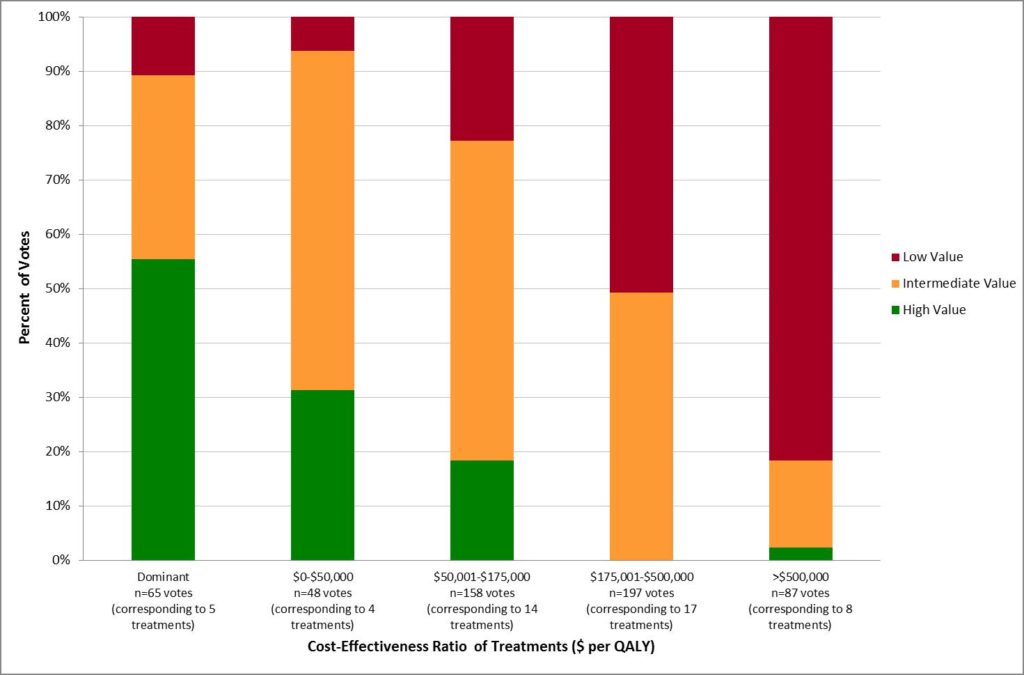That is the question asked by Peter Neumann, Madison Silver, and Joshua T. Cohen in their recent Health Affairs blog article. The authors use publicly-available information from ICER reports, in order to analyze committee member votes across 48 treatments assessed by ICER. ICER reports considered were published between December 2014 and August 2018. As shown in the figure below, the authors found a strong correlation between cost per QALY and committee member votes on value.
They authors write:
As expected, as cost-effectiveness ratios increased (became less favorable), the proportion of committee members voting “high value” declined, while the proportion voting “low value” increased…Ultra-rare status and disease type (cancer versus non-cancer) had at most a modest impact on this tendency.
Other factors did, however, influence committee member votes:
As expected, as cost-effectiveness ratios increased (became less favorable), the proportion of committee members voting “high value” declined, while the proportion voting “low value” increased (Exhibit 1). Ultra-rare status and disease type (cancer versus non-cancer) had at most a modest impact on this tendency.
Interesting throughout. Do read the whole piece.

1 Comment